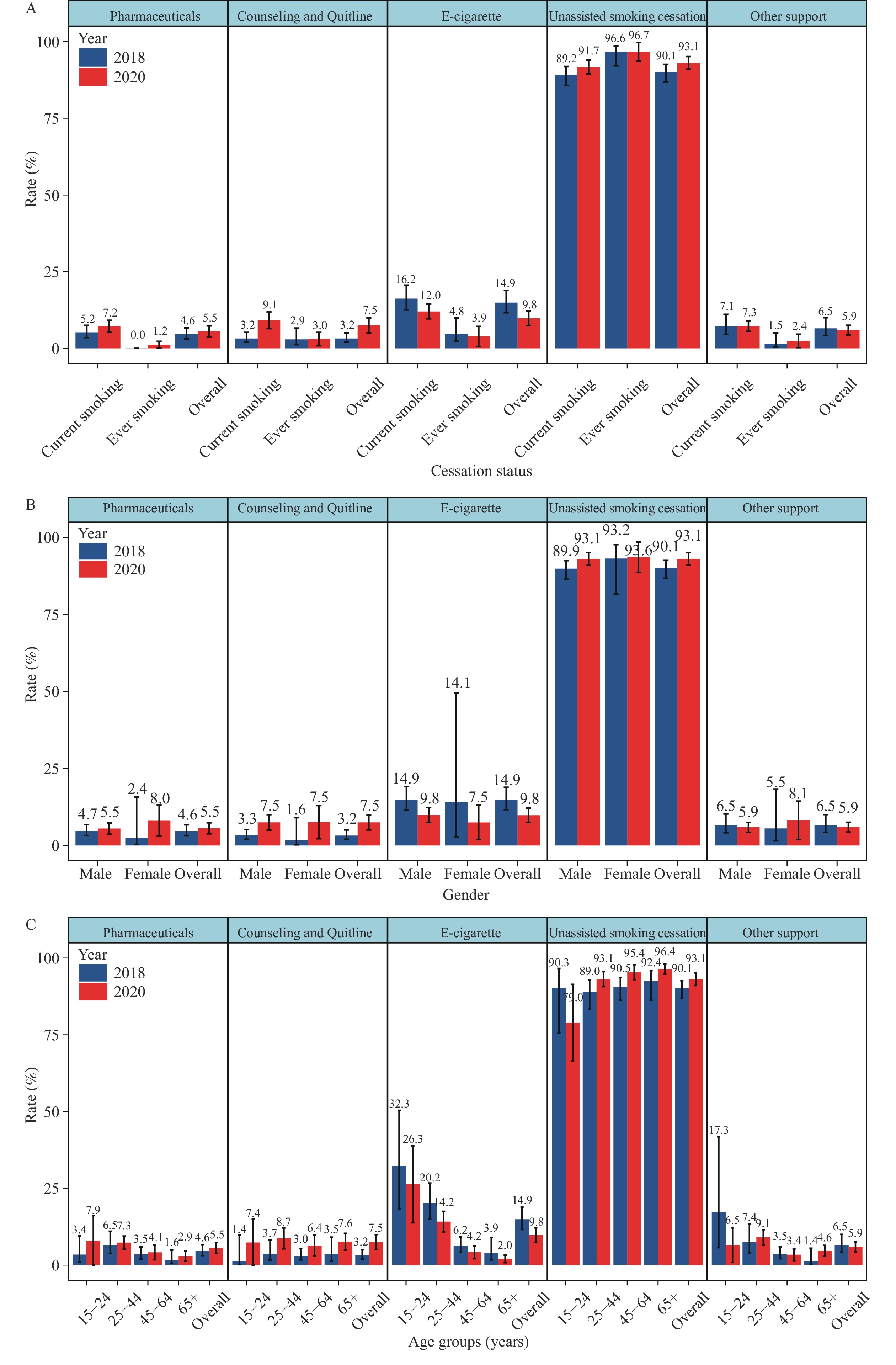2023 Vol. 5, No. 21
In 2018, unassisted smoking cessation (USC) was the predominant method for quitting smoking among Chinese adult smokers, accounting for 90.1% of cases. The utilization of professional smoking cessation support was comparatively low in this population.
In 2020, the prevalence of USC methods increased to 93.1%. Concurrently, there was a slight increase in the utilization of pharmaceuticals (from 4.6% in 2018 to 5.5% in 2020) and counseling and quit line services (from 3.2% in 2018 to 7.5% in 2020). On the other hand, the use of e-cigarettes as a cessation aid decreased from 14.9% in 2018 to 9.8% in 2020. Smokers aged 15–24 years old were more likely to rely on pharmaceutical interventions (7.9%), and less likely to choose USC methods (79.0%).
The promotion of professional cessation support is essential for enhancing smoking cessation rates.
Mobile health interventions have been demonstrated to be effective in aiding smoking cessation among smokers. Nevertheless, research on this topic remains limited in China.
Following two months of utilizing the services of a comprehensive mobile health (mHealth)-based modality (“Way to Quit” modality) which integrated three online interventions through the WeChat application, 29.1% of participating smokers successfully quit smoking. Participants who used a greater number of online services were more likely to cease smoking. All services were scored highly for satisfaction among smokers.
This study presents a practical and feasible method to assist Chinese smokers in quitting smoking. The results of this research suggest a promising direction for enhancing the accessibility and utilization of smoking cessation services. Additionally, these findings serve as a critical reference for addressing the obstacles faced by smoking cessation services in China.
Since 2014, the Chinese government has advocated for the development of smoking cessation clinics (SCCs) within each provincial-level administrative division (PLAD).
In the 2019–2021 period, the self-reported 7-day point prevalence of abstinence rates (PPARs) at 1-month and 3-month follow-up were 26.2% and 23.5%, respectively.
The interventions implemented by SCCs in this investigation proved to be successful. It is imperative to employ extensive tobacco control strategies in order to enhance the motivation of smokers to seek assistance for cessation from SCCs.



 Subscribe for E-mail Alerts
Subscribe for E-mail Alerts CCDC Weekly RSS Feed
CCDC Weekly RSS Feed